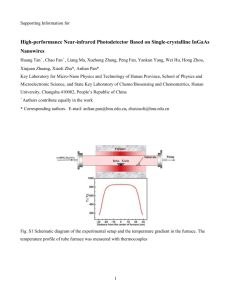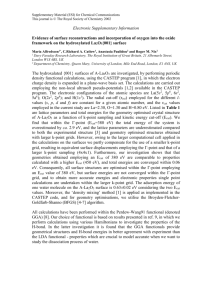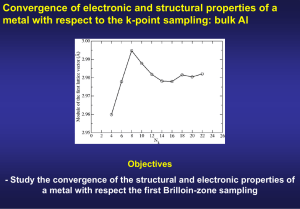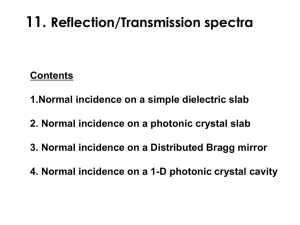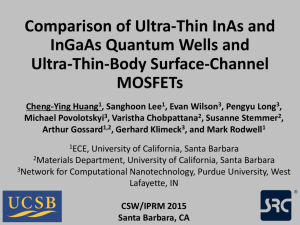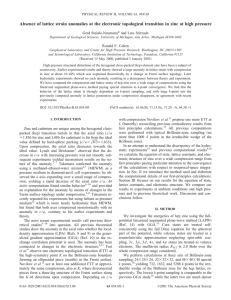Theoretical analysis of initial adsorption of high-κ
advertisement
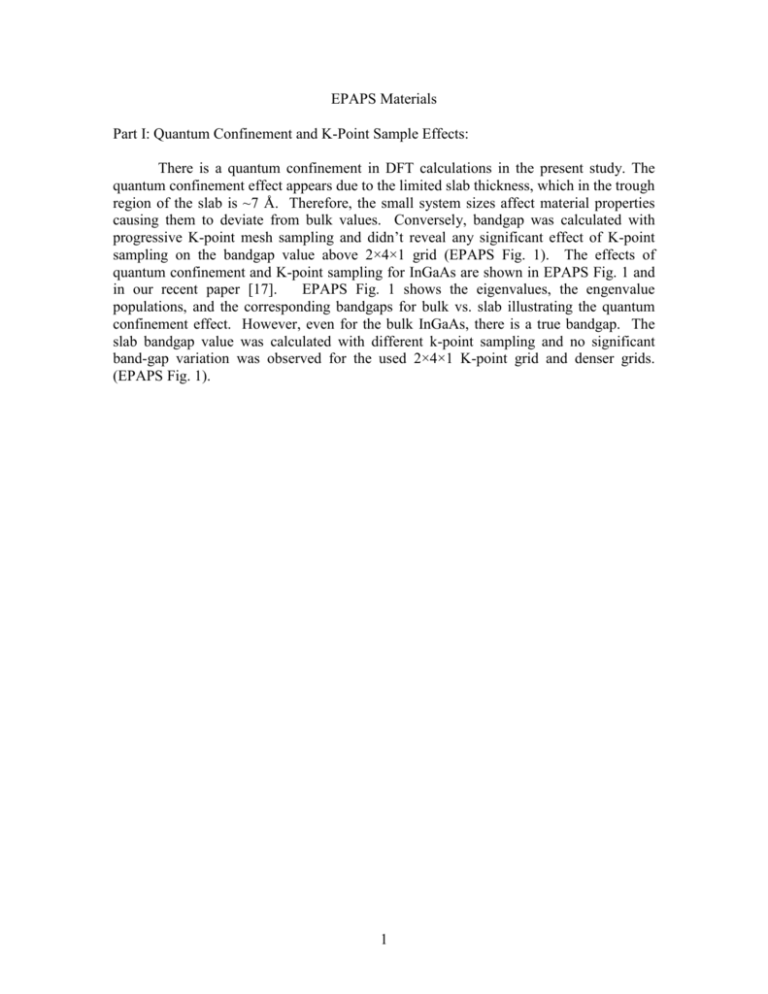
EPAPS Materials Part I: Quantum Confinement and K-Point Sample Effects: There is a quantum confinement in DFT calculations in the present study. The quantum confinement effect appears due to the limited slab thickness, which in the trough region of the slab is ~7 Å. Therefore, the small system sizes affect material properties causing them to deviate from bulk values. Conversely, bandgap was calculated with progressive K-point mesh sampling and didn’t reveal any significant effect of K-point sampling on the bandgap value above 2×4×1 grid (EPAPS Fig. 1). The effects of quantum confinement and K-point sampling for InGaAs are shown in EPAPS Fig. 1 and in our recent paper [17]. EPAPS Fig. 1 shows the eigenvalues, the engenvalue populations, and the corresponding bandgaps for bulk vs. slab illustrating the quantum confinement effect. However, even for the bulk InGaAs, there is a true bandgap. The slab bandgap value was calculated with different k-point sampling and no significant band-gap variation was observed for the used 2×4×1 K-point grid and denser grids. (EPAPS Fig. 1). 1 EPAPS Figure 1. The eigenvalues, their occupation and density of states for InGaAs bulk and slab. (a) bulk InGaAs. (b) clean InGaAs slab at 2×4×1 K-point mesh. (c) clean InGaAs slab at 4×8×1 K-point mesh. The Fermi level is at 0 eV. DOS curve was normalized to [0,1] interval. Eigenvalues are presented for all K-points. Part II: DFT Calculations of DOS of HfO2 and ZrO2 sites on InAs(0 0 1) – (4 × 2) The electronic structures for the four HfO2 and ZrO2 sites on InAs(0 0 1) – (4 × 2) described in the paper (trough insertion, row edge site, bridge site, and full coverage) are shown in EPAPS Figure 2 (a)-(d). Each electronic structure is compared to the results for the clean β3′(4 × 4) reconstruction. The impact on the electronic structure post MO2 adsorption is nearly identical for both HfO2 and ZrO2. All four MO2 sites produced improved electronic properties compared to the initial clean surface. The gap state at the Fermi level induced by the clean InAs reconstruction is reduced by the adsorption of oxide on the surface. Specifically, the electronic structure for the bridge site [EPAPS 2 Fig. 2(c)] reduces the density of states at Fermi level due to the restoration of the trough In atoms and edge As atoms to bulk-like sp3 hybridized bonding schemes. Most promising is the electronic structure result for the full coverage MO2 site. The full coverage site passivates all surface states induced by the trough and produces an improved electronic structure. The electronic structure results for all MO2/InAs(001)-(4 × 2) configurations suggest that the covalent nature of the MO2 bonding to the surface improves the electronic interface properties. When the band structures were calculated for the adsorbed MO2 surfaces the bandgap was found to be an average of 0.8 eV for each site, similar to the results for the β3′Alt.(4 × 2) structure. EPAPS Figure 2. DFT calculated electronic structures for the 4 MO2 (M = Hf, Zr) adsorption sites simulated compared to the clean InAs(0 0 1)-β3′(4 ×4) electronic structure (black dashed line). Hf and Zr oxide adsorption sites have almost identical DOS structures near the Fermi level for all sites modeled. DOS is the density of states per slab, double unit cell. 3
